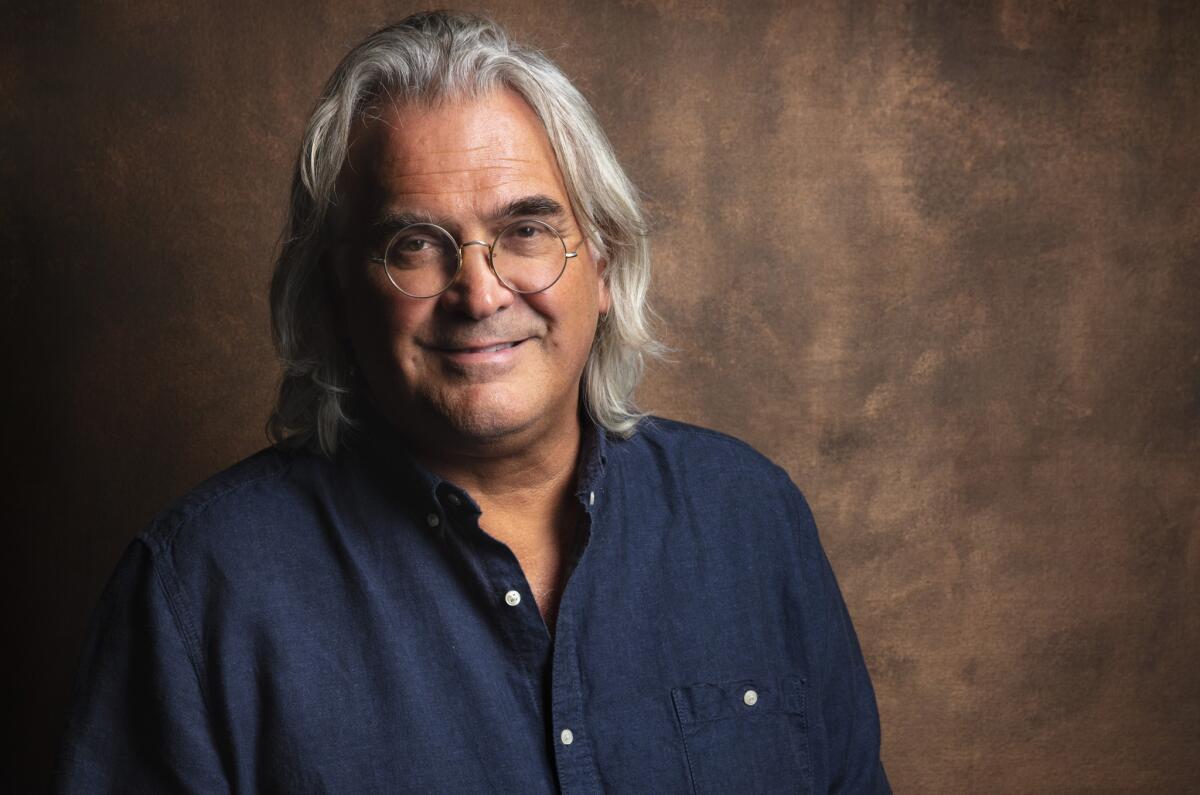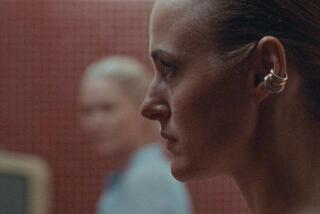Paul Greengrass revisits terrorist massacre of Norway youth in ’22 July’

- Share via
The film “22 July” revisits the summer day in 2011 when neo-Nazi Anders Breivik detonated a car bomb in Oslo, then gained access to a youth camp on the Norwegian island of Utøya and methodically shot 69 young people to death. “The film is obviously disturbing in the first 30 minutes or so,” says writer-director Paul Greengrass. “I needed to create a sequence that serves as the platform for the rest of the story, because if you don’t know how grievously Norway suffered, then you can’t invest in the struggle for its democracy, which is really what ’22 July’ is about.”
Ensconced in a Santa Monica hotel 15 miles north of Redondo Beach, home to white supremacists charged in October for inciting riots in Charlottesville, Va., Greengrass frames his unsettling new movie as a way of “ringing the bell” about the rise of right-wing extremism throughout the Western world. “’22 July’ is about Norway, that place and that time, but I also think it’s a universal story about a state of mind, a sort of everyplace, if you know what I mean.”
Educated at Cambridge, Greengrass tethered himself to real-world friction early in his career by covering global hot spots in TV documentaries. He then turned to fact-based scripted dramas including “Bloody Sunday,” “Captain Phillips” and the 9/11 tragedy “United 93,” for which he earned an Oscar nomination. Even the director’s Jason Bourne movies, filmed largely on hand-held cameras, grounded the fictional spy craft in realistically gritty locations.
Based on Åsne Seierstad’s book “One of Us,” “22 July” took shape for Greengrass after he studied terrorist Breivik’s eerily prescient speechifying. “I sat in the office one day and read his court testimony about how ‘Democracy’s a sham, it’s forcing multiculturalism upon us, we’re losing our identity,’ Greengrass says. “That’s the moment I knew I was going to make this movie. Those opinions were considered to be on the margins of civilized political discourse when he expressed them back in 2012. Today, millions of people believe this stuff.”
Mindful that he’d be revisiting a profoundly traumatic chapter of Norwegian history, Greengrass secured permission to proceed with his movie from the 22 July Family Support Group, whose relatives were victimized in the massacre. He recalls one meeting in particular. “A gentleman stood up and said, ‘I strongly support you making this film, but I want you to know that you will be doing a disservice to me and a disrespect to my daughter, who’s no longer with me, if you sanitize this violence. On the other hand, you would be doing the same disservice if you portray what happened in an exploitative way.”
Conscientious of that fine line, Greengrass teamed with an entirely Norwegian cast and crew to film the Utøya sequence over the course of about 10 days. “I tried to handle it with great restraint,” he says. “There are only really two moments of explicit graphic violence: the shooting of the two adults and then the shooting of [survivor] Viljar Hanssen, which [the vocal gentleman] strongly supported. Other than that, we cut away from this heinous series of murders. You understand what Breivik did; you’re aware of a few people falling in the distance at the edge of the shot, but you could never identify anybody, which was very important.”
Mirroring Norway’s response to the killings, “22 July” affords an unflinching look at perpetrator Breivik (Anders Danielsen Lie), defiant in a court of law when he raises his arm in the Nazi salute. “Norway faced a dilemma,” Greengrass notes: “If we allow this man to speak in court, we’re giving him a platform to justify the unjustifiable and seek to create more recruits to his cause. But on the other side, if we deny Breivik the right to speak, we undermine the rule of law at the heart of our democracy.”
The film also tracks the grueling recovery of teenager Hanssen, shot five times during the assault at Utøya. Played by first-time movie actor Jonas Strand Gravl, Viljar delivers a survivor’s statement of uncommon eloquence while staring down his attacker just a few feet away in court. Greengrass recalls, “I wanted that speech to sum up certain things: We believe in love, in family, in friendship. And we are not going to have our lives destroyed by this man and his ideas.”
WATCH: Video Q&A’s from this season’s hottest contenders »
More to Read
From the Oscars to the Emmys.
Get the Envelope newsletter for exclusive awards season coverage, behind-the-scenes stories from the Envelope podcast and columnist Glenn Whipp’s must-read analysis.
You may occasionally receive promotional content from the Los Angeles Times.







